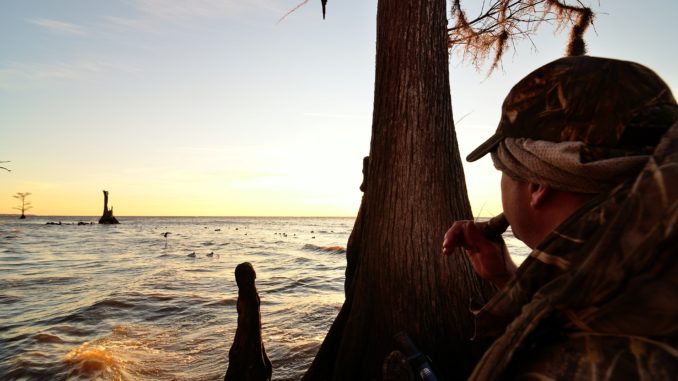
South Carolina waterfowlers need to take advantage of public hunting opportunities to bag the first migratory ducks of the season.
On Dec. 8, more than 20,000 South Carolina hunters will finally get a shot at millions of waterfowl retreating from the famous northern breeding grounds in Canada and the United States.
Flooding the coastal marshes, river swamps and grain fields, new arrivals will pour into the Palmetto State this month along their migratory itinerary, looking to rest and refuel. Hunters who don’t get in on the action early will miss out on some of the best wing shooting of the year, especially on the hundreds of thousands of acres of South Carolina’s publicly accessible waters.
In some years, South Carolina ranks at the top of the list for harvests along the Atlantic flyway, and rarely does it ever fall below No. 3 in duck harvests. South Carolina may lack the notoriety and mere volume of waterfowl as compared to states on the Pacific, Central and Mississippi flyways, but its hunters should have little to complain about. Of the 20,000 licensed waterfowl hunters, the U.S. Fish and Wildlife Service estimates they harvest between 220,000 and 240,000 ducks annually.
The 2012 breeding-grounds survey revealed 48.6 million ducks, the highest on record, with waterfowl scattered from the “St. Lawrence plain” to the “Prairie Pothole” region in the Midwest. Statistically, South Carolina should expect an above average flight this winter, with improved diving and puddle duck flocks included in the flight manifest.
Typically, hunters expect a crescendo toward the end of January and the close of the 60-day season — when cold weather arrives — but the December season can offer some of the best hunts of the year.
“The highest concentrations of ducks will be found in South Carolina during late November through December in the time of peak fall migration,” said Greg Yarrow, a Clemson University wildlife professor.
Overall, the state lacks widespread waterfowl habitat from border to border, but it has enough critical habitats in certain regions to qualify as a valid venue for migrating ducks. Fortunately, the S.C. Department of Natural Resources maintains publicly owned or managed waterfowl management areas as a priority for its stakeholders.
Dean Harrigal, SCDNR’s chief waterfowl biologist, said that habitat-enhancement activities take place extend through the entire wintering season, well beyond the 60-day duck season.
“It is important for us as natural-resource managers to manage for habitat diversity, food, loafing areas and roosting areas that complete the daily and annual needs for waterfowl while they are in town.”
Land stewards must provide ducks with needed resources since migration exhausts significant energy reserves, and waterfowl must find places to recover and refuel before the next leg of their trip. The extensive river systems, swamps, beaver ponds and coastal marsh areas offer waterfowl with critical resting and feeding areas along their migratory route.
Chief Louie Chavis of the Beaver Creek Indian People, guides for S.C. Waterfowl Association on many of the state’s larger public bodies of water, where he concentrates his efforts early in the season when migratory ducks are at their most active.
“New birds will arrive in large flocks and land at a staging area or big water first, and then break off later into smaller groups,” said Chavis (803-356-4807).
Over 90 percent of South Carolina’s 700,000 acres of surface water is open to the public. While many ducks will utilize impoundments and privately-owner lakes and swamps, migrating ducks will usually drop their feet in one of the state’s large rivers, lakes or estuaries first.
Luckily for waterfowlers, the overwhelming majority of these areas are accessible to the public — places like the Santee Coopers lakes, the Santee Delta, the Pee Dee River system and the ACE Basin provide critical habitat for migrating flocks and ideal places to intercept these winged migrants. But these places can be quite large, and before naïve ducks can be lured into shotgun range, hunters must locate flocks and figure how to get the ducks to conveniently pass within sight or hearing distance of the blind and/or decoy setup.
“Ducks are where you find them, but you must find a place where ducks trade back and forth between feeding, loafing, and roosting areas,” Harrigal said.
Chavis begins scouting early along the major rivers and lakes. He identifies where the birds go at first light and then during the rest of the day. While many hunters are concerned where the birds want to go at first light, Chavis is more concerned about the mid-morning and mid-day destinations.
“Take the time to put the boat in and ride with a good pair of binoculars,” he said. “Just be on the water when the sun is already up and listen for the shots from other hunters across the lake or marsh …. The birds will pick up and go somewhere else.”
Ducks are mostly looking for a safe place to eat. After running into a series of shotgun blasts at their favorite breakfast location, they will be eager to find an alternative place to eat on the way to resting areas. Chavis will figure out a place between the breakfast nook and resting area to set up around cover and food. He chooses places with natural cover to conceal his boat and Avery boat blind.
“You don’t want to stand alone. A few cypress or gum trees are such a blessing,” he said.
After hunting, Chavis will pick up his decoys and look around the entire area, searching for places where birds rest during the remainder of the day.
While the large bodies of water will attract birds first along their migration route, spectacular duck hunting is available in the state’s productive public waters well beyond the largest estuaries, lakes and river systems. Beaver ponds and open-water swamp systems on public lands will attract many migrants, but according to Harrigal, the ducks will be more widely scattered the further inland hunters venture.
“You don’t get the concentrated habitat inland that you get along the coast,” he said. “But the inland regions are littered with beaver ponds on public and private lands that hold pockets of birds.”
Harrigal recommends hunters to do their homework through aerial-photo review on Google Earth and scouting of the national forests and other Wildlife Management Areas. Additionally, he strongly advises hunters to visit SCDNR’s Category Two waterfowl management areas, such as Hickory Top greentree reservoir, the Beidler impoundment, and the 15 or so others. These non-draw areas are access-limited by time and date.
“Depending on the hunting pressure and conditions, the Category Two (areas) can offer excellent waterfowl hunting, but pressure moves birds, and these hunt units can sour quickly with heavy hunting activity,” said Harrigal, who advises public-land hunters to be flexible and willing to walk to remote areas to find pockets of birds tucked away in flooded timber and beaver ponds.
“You can find ducks here in South Carolina, but you just have to look for them exploiting food resources in protected areas.”
Even though South Carolina and the Eastern Flyway itself carries a moderate percentage of the North American flock, state gunners can avoid out-of-state trips with some remarkable opportunities inside state boundaries. As the season opens in December, local waters along the coast and in the Piedmont can provide steady action for persistent waterfowlers willing to go the extra mile.

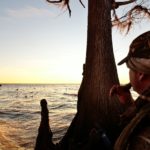
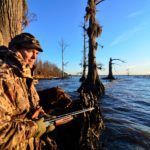
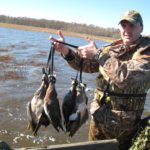
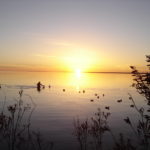

Be the first to comment